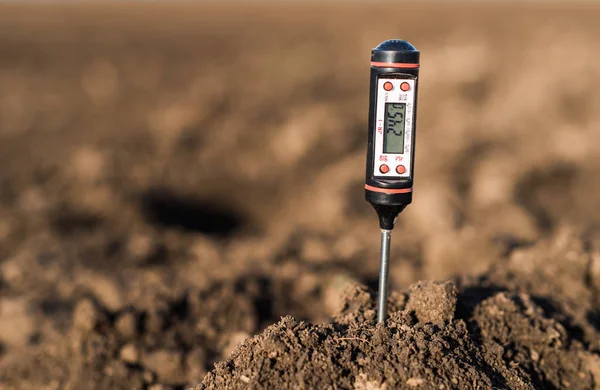
When preparing to build your dream home on a piece of land, one crucial step often overlooked is soil testing. Understanding the importance of soil testing before construction is paramount for ensuring a sturdy foundation and a smooth building process. Soil composition plays a fundamental role in determining the stability and longevity of any structure built on the land.
By conducting thorough soil tests before breaking ground, you uncover vital information about the soil’s properties that could impact your construction project. These tests help identify potential risks such as soil instability, excessive moisture content, or inadequate load-bearing capacity that could jeopardize the structural integrity of your future home.
Moreover, soil testing allows for the optimization of building plans tailored to the specific characteristics of the land. This proactive approach not only mitigates potential issues during construction but also paves the way for sustainable building practices and cost-effective solutions in the long run. Understanding the soil beneath your feet is the first step towards building a safe, durable, and environmentally conscious home for you and your family.
Understanding the Role of Soil Testing in Construction
Soil testing plays a crucial role in construction projects as it provides essential insights into the composition of the land on which buildings will be erected. By analyzing soil samples through specialized methods, builders can determine the suitability of the ground for construction purposes. The process involves examining key parameters that influence the stability and longevity of structures.
Determining Soil Composition
In construction, determining soil composition is a critical step to assess the characteristics of the land accurately. Soil testing involves various methods such as borehole tests, standard penetration tests, and soil resistivity tests, among others. These techniques help analyze soil samples to identify properties like texture, density, moisture content, and load-bearing capacity. By understanding the composition of the soil, builders can make informed decisions regarding the foundation design and construction materials.
Impact on Foundation Stability
The results of soil testing have a direct impact on the stability of building foundations. Poor soil quality can pose significant risks to the structural integrity of a construction project, leading to issues like uneven settlement, foundation cracks, or even structural failure. By preemptively conducting soil tests, builders can detect potential problems early on and take necessary measures to mitigate risks. Ensuring a stable foundation through soil testing enhances the durability and safety of buildings, safeguarding them against future structural challenges.
Soil quality is closely linked to the strength and longevity of building foundations. Understanding the correlation between soil composition and foundation stability is vital for ensuring a solid and resilient structure. Soil testing acts as a preventive measure, allowing builders to address soil-related issues proactively and create a strong foundation that can support the structure effectively over time. By prioritizing soil testing in construction projects, individuals can lay the groundwork for safe and durable buildings that stand the test of time.
The audience for this information includes individuals or families looking to build on purchased land. These first-time land buyers seek guidance on land selection, preparation, legal requirements, budgeting, and design. They are interested in sustainable building practices, landscaping ideas, and finding professionals to help them through the construction process.
Benefits of Soil Testing Before Building
Soil testing before embarking on a construction project offers a myriad of advantages that can significantly impact the success and sustainability of your building endeavor. Let’s delve into the key benefits that soil testing provides:
Cost Efficiency in Construction
Soil testing plays a crucial role in ensuring cost efficiency throughout the construction process. By conducting thorough soil tests early on, builders can uncover potential issues such as soil instability, presence of hazardous materials, or unsuitable soil composition. This early detection helps prevent unexpected budget overruns and costly corrective measures later in the project timeline. By addressing soil-related challenges proactively, builders can streamline the construction process, minimize delays, and optimize resource allocation, ultimately leading to substantial cost savings.
Risk Mitigation Through Soil Analysis
One of the primary benefits of soil testing is its ability to mitigate risks associated with soil-related challenges. Soil analysis provides valuable insights into the soil’s characteristics, enabling builders to identify potential hazards such as poor load-bearing capacity, high water content, or contamination. By assessing these risks upfront, builders can implement appropriate solutions and engineering techniques to address soil issues effectively. This proactive approach not only enhances the structural integrity of the building but also reduces the likelihood of costly repairs or safety hazards down the line.
Enhancing Sustainability in Building Practices
Soil testing also plays a fundamental role in promoting sustainable building practices and environmentally friendly construction solutions. Understanding the composition and quality of the soil beneath a construction site allows builders to make informed decisions that support eco-conscious building practices. By tailoring construction techniques and material choices to suit the soil conditions, builders can optimize resource utilization, reduce waste generation, and minimize environmental impact. Incorporating soil testing into the building process paves the way for sustainable construction projects that prioritize long-term environmental stewardship and energy efficiency.
By embracing soil testing as a foundational step in the construction journey, builders can harness its cost-saving potential, risk mitigation capabilities, and sustainability benefits to ensure the successful and responsible development of their building projects. Conducting thorough soil tests not only empowers builders to make informed decisions but also fosters a more resilient and sustainable approach to construction practices.
For further information on the benefits of soil testing in construction, you can refer to Construction Dive’s insights.
Soil Testing Process and Best Practices
Soil testing is a crucial step before embarking on any construction project to ensure the stability, safety, and longevity of the structure. By examining the composition of the soil, builders can determine its properties and make informed decisions regarding the building process. Let’s delve into the essential aspects of the soil testing process and the best practices associated with it.

Choosing the Right Soil Testing Methods
When it comes to choosing the appropriate soil testing methods for construction projects, there are several options available, each serving specific purposes based on the project requirements. Some common soil testing methods include:
- Percolation Test: This method assesses how quickly the soil absorbs water, crucial for determining the suitability of the soil for septic systems and drainage.
- Boring Test: Involving drilling into the ground to extract soil samples, this method helps analyze the soil’s composition, strength, and stability.
- Soil Resistivity Test: Essential for electrical grounding systems, this test measures the soil’s resistance to the flow of electricity.
- Soil pH Test: Determines the acidity or alkalinity of the soil, which influences nutrient availability for plant growth and foundation stability.
Selecting the most appropriate method depends on various factors, such as the type of construction, soil composition, and desired outcomes. Consulting with geotechnical engineers or soil testing professionals can help in determining the most suitable method for your specific project needs.
Interpreting Soil Test Reports
Interpreting soil test reports can be daunting for those unfamiliar with the terminology and implications of soil characteristics. Here are some key points to consider when deciphering soil test reports:
- Soil Composition: Understanding the soil’s composition, including sand, silt, clay, and organic matter content, is crucial for determining its load-bearing capacity and drainage properties.
- Compaction: Soil compaction levels impact the stability and settlement potential of the foundation. High compaction is desirable for building foundations.
- Permeability: Assessing the soil’s permeability helps in evaluating drainage requirements and potential waterlogging issues on the construction site.
- Nutrient Content: Soil nutrient levels affect plant growth and require adjustments for landscaping purposes.
By grasping the information presented in soil test reports, builders can make informed decisions regarding foundation design, drainage solutions, and landscaping strategies tailored to the unique characteristics of the soil on their land.
Ensuring thorough soil testing and accurate interpretation of test reports are essential best practices before embarking on any construction project. By understanding the soil composition and properties beneath the surface, builders can mitigate risks, optimize construction processes, and lay a solid foundation for the structures to come.
Conclusion
Soil testing before building on your land is a critical step that should not be overlooked. By analyzing the composition of the soil, you can ensure the structural integrity of your future construction project. This process is key in determining if the soil can adequately support the foundation needed for your building, ultimately avoiding costly issues down the road.
Moreover, soil tests contribute to cost efficiency by helping you plan the construction process more accurately. Understanding the soil conditions can prevent surprises during the building phase, saving you time and money. Additionally, prioritizing soil testing aligns with sustainable building practices, as it allows for environmentally conscious decisions in land preparation.
In conclusion, for individuals or families embarking on a journey to build their dream home, soil testing is a fundamental aspect of the land preparation process. It sets the foundation for a successful and sustainable construction venture, ensuring that your project is built on solid ground both literally and metaphorically. Make soil testing a priority and pave the way for a smooth and secure building experience.

